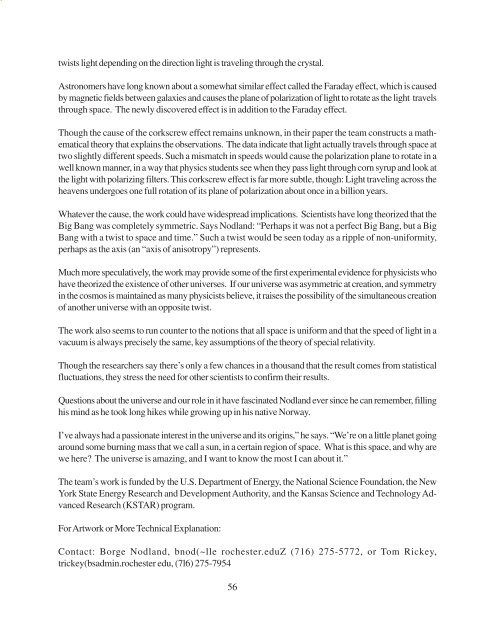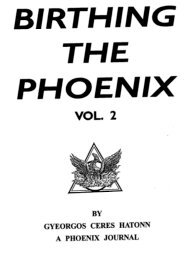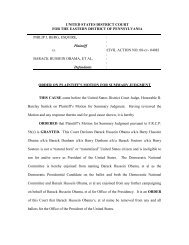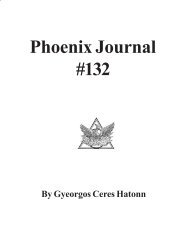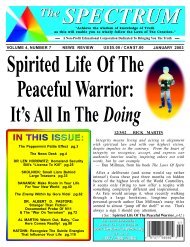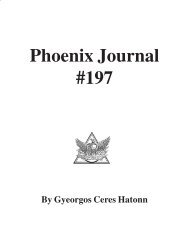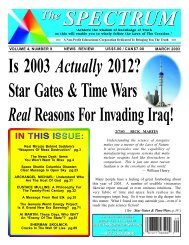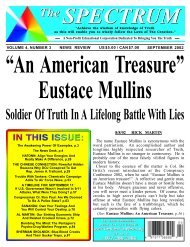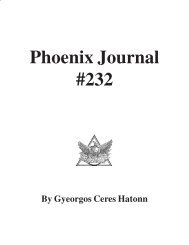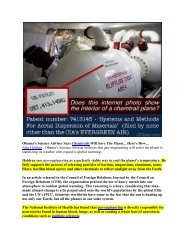Phoenix Journal 208 - Four Winds 10
Phoenix Journal 208 - Four Winds 10
Phoenix Journal 208 - Four Winds 10
You also want an ePaper? Increase the reach of your titles
YUMPU automatically turns print PDFs into web optimized ePapers that Google loves.
twists light depending on the direction light is traveling through the crystal.<br />
Astronomers have long known about a somewhat similar effect called the Faraday effect, which is caused<br />
by magnetic fields between galaxies and causes the plane of polarization of light to rotate as the light travels<br />
through space. The newly discovered effect is in addition to the Faraday effect.<br />
Though the cause of the corkscrew effect remains unknown, in their paper the team constructs a mathematical<br />
theory that explains the observations. The data indicate that light actually travels through space at<br />
two slightly different speeds. Such a mismatch in speeds would cause the polarization plane to rotate in a<br />
well known manner, in a way that physics students see when they pass light through corn syrup and look at<br />
the light with polarizing filters. This corkscrew effect is far more subtle, though: Light traveling across the<br />
heavens undergoes one full rotation of its plane of polarization about once in a billion years.<br />
Whatever the cause, the work could have widespread implications. Scientists have long theorized that the<br />
Big Bang was completely symmetric. Says Nodland: “Perhaps it was not a perfect Big Bang, but a Big<br />
Bang with a twist to space and time.” Such a twist would be seen today as a ripple of non-uniformity,<br />
perhaps as the axis (an “axis of anisotropy”) represents.<br />
Much more speculatively, the work may provide some of the first experimental evidence for physicists who<br />
have theorized the existence of other universes. If our universe was asymmetric at creation, and symmetry<br />
in the cosmos is maintained as many physicists believe, it raises the possibility of the simultaneous creation<br />
of another universe with an opposite twist.<br />
The work also seems to run counter to the notions that all space is uniform and that the speed of light in a<br />
vacuum is always precisely the same, key assumptions of the theory of special relativity.<br />
Though the researchers say there’s only a few chances in a thousand that the result comes from statistical<br />
fluctuations, they stress the need for other scientists to confirm their results.<br />
Questions about the universe and our role in it have fascinated Nodland ever since he can remember, filling<br />
his mind as he took long hikes while growing up in his native Norway.<br />
I’ve always had a passionate interest in the universe and its origins,” he says. “We’re on a little planet going<br />
around some burning mass that we call a sun, in a certain region of space. What is this space, and why are<br />
we here? The universe is amazing, and I want to know the most I can about it.”<br />
The team’s work is funded by the U.S. Department of Energy, the National Science Foundation, the New<br />
York State Energy Research and Development Authority, and the Kansas Science and Technology Advanced<br />
Research (KSTAR) program.<br />
For Artwork or More Technical Explanation:<br />
Contact: Borge Nodland, bnod(~lle rochester.eduZ (716) 275-5772, or Tom Rickey,<br />
trickey(bsadmin.rochester edu, (7l6) 275-7954<br />
56


